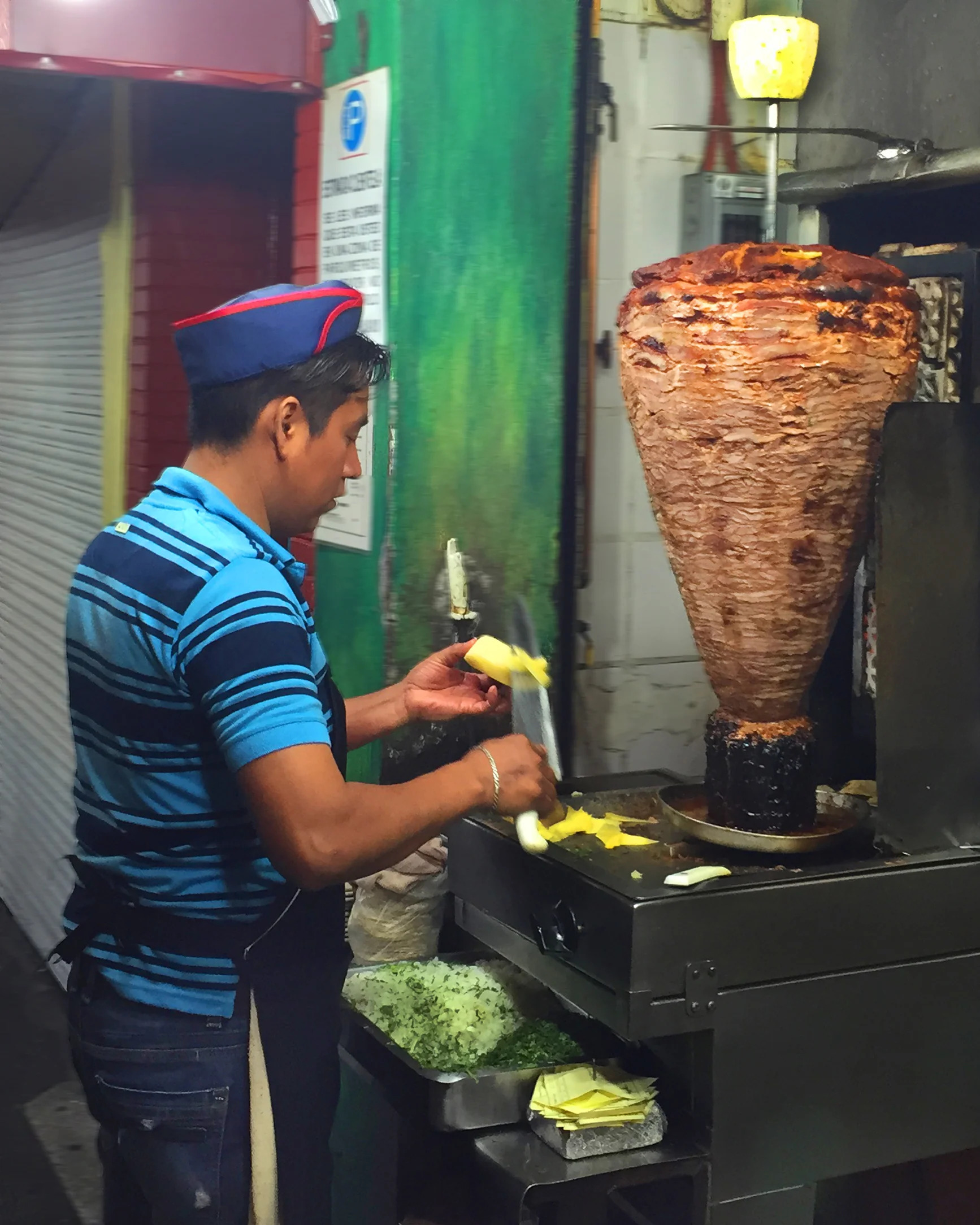What’s in a Fonda
My book is entitled Good Food in Mexico City: Food Stalls, Fondas and Fine Dining. People often wonder what a ‘fonda’ is. The word, Arabic in origin, is defined by the dictionary as “a tavern, inn or small restaurant.” But like the European concepts bistro and tratttoria, the definition here in Mexico has become blurred, or better said, broadened. There are fancy restaurants like the recently closed but legendary Fonda del Refugio, an elegant townhouse staffed by bow-tied waiters and tables set with white tablecloths and nice china. There's postmodern Fonda Fina here in CDMX or Brooklyn’s Fonda, a small, very New Yorky place offering interesting modern re-workings of classic dishes and good tequila. But ‘real’ fondas, in the old-fashioned sense are small mom-and-pop joints with just a few tables; simple unpretentious eateries serving breakfast, snacks or an inexpensive ‘comida corrida’ - lunch served in three ‘tiempos’ or courses.Mexico is full of fondas. They are in every downtown and market from Tampico to Tonalá. Here in Mexico City, the best are located in our historic center. I love some of these old places, many of which haven’t changed in decades. “Old fashioned things for old fashioned people” repeated a character over and over in J.C. Van Itallie’s play ‘America Hurrah’. That’s me.
So I go downtown once and while to Gran Cocina Mi Fonda where time stopped around 1950. This simple but charming archetypal urban fonda serves Mexican food with a Spanish touch. Multi-layered turquoise walls, yellow wooden tables that single diners are asked to share and uniformed waitresses, it’s a real hold-over from the centro of yesteryear, and the prices seem unchanged too. Although paella is the specialty of the house, I like the roast chicken and the Madrid-style potaje de lentejas, a lentil soup flavored with chorizo.
The milanesa, very Mexican despite its Italianate moniker, is pounded beef perfectly bronzed and crispy on the surface, tender/juicy within. The bolillos (rolls) are crusty and just right for scooping up the picante, tomatoey cilantro-perfumed salsa. And what better to wash it all down with than a Boing!, the campy fruit-based drink whose vintage bottle shows off its pastel colors so well. I go when I feel like a trip back to the Mexico I first knew thirty years ago, a place that resisted the encroaching plasticised fastfood-ification that plague-like, spreads from our northern neighbor.
Out in ‘la provincia’ the old style is easier to find. The beautifully preserved colonial-period town of Malinalco lies in a valley a couple of hours west of the city. Home to an Aztec temple, a very elaborate 16th century cathedral and a community of escapees from the big city who know what they've got, the town hosts one of the best fondas of all: Fonda La Esmeralda. Walls painted bright green, tables and chairs of the rustic ‘Frida’ variety, the place looks like a set for a hypothetical Mexican operetta. On stage, two sisters serve up savory corn-based antojitos like someone’s grandmother used to make--enchiladas, green or with mole, eggs ‘al gusto’, pork in red sauce. Luz Maria, a woman in her ‘50’s, is smiley, gregarious and proud. She is the obvious boss and head chef – her quiet and slow moving sister Elvira is the waitress and helper. She does what several generations of female cooks in her family taught her. “I learned from my mother, my aunt, my grandmother, all of whom lived in town”, she explains, while washing dishes and stirring a huge pot of bubbling, brick-red stew. Her battered pans and smoky black clay cazuelas and ollas attest to her 20 years in the business. She elaborates “I use what is best in the market – for example, the tortillas are hand-made: they are little more expensive, but taste so much better.” Case in point are her chilaquiles, comfort food for many a Mexican. Like my grandmother’s matzoh brei, this dish makes use of yesterday’s dried out tortillas, which are broken up, fried crispy golden, bathed in either red or green salsa, dabbed with sour cream and chopped onion, then strewn with shredded chicken breast. Chilaquiles can be mushy, overly crackly, dry or dull tasting. They are the sum of the quality of their ingredients, which here are top-notch. Luz Maria’s have the ideal texture, that curiously Mexican combination of crunchy and soggy. Her tangy, mildly picante salsa verde is perfectly offset by the coolly smooth crema and the savory bits of onion. And it's all accompanied by a bowl of steaming black beans, locally grown and redolent of the medicinal herb epazote (and of the old clay pot they are slowly cooked in).
This is essential Mexican food as it should be. In Mexico “roots cooking” lives. Thank the Gods. And the men and women who cook.








